In the House of the Dragon season 1 finale, Daemon Targaryen sings a High Valyrian song to Vermithor to awaken him. Daemon’s lullaby has an interesting connection to the Song of Ice and Fire prophecy.
The climax of the House of the Dragon premiere featured Viserys telling Rhaenyra about Aegon’s prophetic dream, which the Conqueror named “A Song of Ice and Fire.” As we all know, the prophecy refers to Aegon’s vision of a terrible, impending Winter that will plunge the Seven Kingdoms into darkness.
In other words, the prophecy refers to the mysterious army of the dead, better known as the White Walkers. It foretells the rise of the Night King and his army. Though this is the part that was of most significance in Game of Thrones, we should be focusing on the other part of the prophecy in context of House of the Dragon.
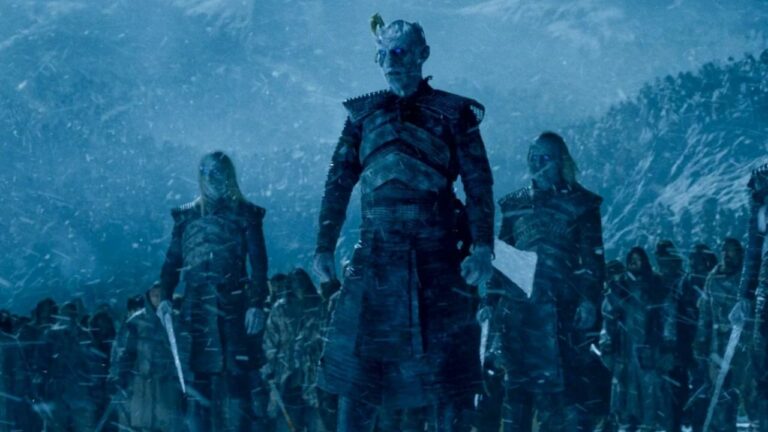
The prophecy also talks about the infamous Prince That Was Promised, referring to a Targaryen ruler who must unite the realm and face the threat of Winter. House of the Dragon connects The Prince That Was Promised prophecy to Daemon’s High Valyrian lullaby for Vermithor effectively in the season finale.
Daemon’s song makes multiple references to “three heads”. It appears in three out of four stanzas, so the song is clearly trying to emphasize on it. The reference to three heads can be linked to George R. R Martin’s A Song of Ice and Fire books.
In the books, when Daenerys hears about The Prince That Was Promised in a vision from Rhaegar Targaryen, he also mentions a dragon with three heads. Now, if you’re expecting a three-headed dragon to pop-up in House of the Dragon, don’t. The prophecy could have meant a lot of things, but it definitely does not refer to an actual three-headed dragon. At least, not from what we know as of now.
The meaning of a dragon with three heads has been much-debated and theorized over. Daemon’s song makes constant references to it. Check out the lyrics below:
Fire breather / Winged leader / But two heads / To a third sing
From my voice / The fires have spoken / And the price has been paid / With blood magic
With words of flame / With clear eyes / To bind the three / To you I sing
As one we gather / And with three heads / We shall fly as we were destined / Beautifully, freely
1. Possible Meanings Behind Daemon’s Vermithor Song
The three heads could be referring to Aegon the Conqueror and his two sister-wives, Visenya and Rhaenys. The three together conquered Westeros on three dragons; Aegon rode Balerion, Visenya rode Vhagar and Rhaenys rode Meraxes.
The song could be talking about Aegon the Conqueror and his conquest of Westeros. Aegon’s dream about White Walkers could further support this idea, as flying “as we were destined” could refer to Aegon’s prophesied conquering.
However, the lyrics “two heads to a third sing” do not fit into this connection with Aegon the Conqueror. This could be a reference to Old Valyria, and the mention of “blood magic” further supports the notion.

The purpose of Daemon’s song was to awaken and prepare Vermithor for a new rider, so he could help the Blacks in the Dance of Dragons. So, it makes sense that his song refers to the ancient ways in which Valyrians bonded with their dragons.
Bonding with dragons involved binding spells and most likely, black magic as well. This explains the reference to black magic in the song. Daemon’s song reminded Vermithor of the ancient bonds between dragons and their riders and prepares him for the impending war.
2. What does “The Dragon Has Three Heads” mean?
In the A Song of Ice and Fire books, Rhaegar telling Dany about a dragon with three heads could refer to his own children. Rhaegar was obsessed with the prophecy and thought that he needed to have three children in order to fulfill it, imitating the ways of Aegon the Conqueror and his sister-wives.
Rhaegar mentions a dragon with three heads while discussing his eldest son, Aegon (not Jon Snow). He wanted to have more children so that the prophecy could be fulfilled. Rhaegar believed that his eldest son, Aegon was indeed The Prince That Was Promised.
Coming to the most commonly accepted theory, the dragon has three heads means that there will be three dragon riders. After Dany hatches her three dragon eggs, she comes to believe the same. The three dragon heads, therefore, refer to Dany’s three dragons – Rhaegal, Viserion and Drogon.

In both the show and the books, Maestor Aemon adds further value to this theory. He too mentions “the dragon has three heads” and that he is “too old” to be one of them, indicating that it involves dragon riding.
No matter which theory you go by, ‘a dragon’ in the phrase refers to a Targaryen leader, or The Prince That Was Promised. This prince is supposed to have three dragons, or have two other dragonriders helping him.
If we go by the books and Game of Thrones, Dany is the first dragon rider. In the show, Jon Snow is the second rider, though we’re not sure what will happen in The Winds of Winter, Martin’s second-last book in the series.
There are various theories surrounding the third rider. In the show, Night King rode a resurrected Viserion. However, Night King does not exist in the books in the way that he does in the series. So, it is highly unlikely that he will be the third rider.
3. Who is the third rider in the prophecy?
Theories suggest several names, ranging from Bran Stark, Tyrion Lannister, Euron Greyjoy or Young Griff, aka Aegon Targaryen, purported to be Rhaegar’s still-alive eldest son from Elia Martell. However, it is not easy for any non-Targaryen to ride a dragon.
There’s no such rule that only Targaryens can ride dragons, but for centuries they’ve been the only House to have dragons. Therefore, theories suggesting Bran and Tyrion to be dragon riders do not hold much basis if we consider them canon.
Surely, Game of Thrones broke this rule by letting the Night King ride a dragon. But again, there’s no Night King in the books, and Viserion was under the influence of the Night King. I don’t think we can count on that.
Apart from Targaryens, we’ve never had anyone ride dragons in the Westeros universe. Jon Snow being able to ride a dragon so easily only proved his Targaryen descent. As we know quite well, Jon is the son of Lyanna Stark and Rhaegar Targaryen which makes him a true Targaryen. Moreover, the most popular fan theories consider Jon Snow to be the Prince That Was Promised, not Rhaegar’s eldest son.

The Velaryons, whom we see riding dragons in House of the Dragon, also carry the blood of Old Valyria. Moreover, both dragon riders, Laenor and Laena have Targaryen blood from their mother, Rhaenys Targaryen.
So, unless Rhaegar and Elia’s eldest son is alive, it’s hard to have a third dragon rider. But let us just trust Martin to come up with something in the books. Depending on what the upcoming books say, Daemon’s High Valyrian dragon lullaby could have different meanings.
4. About House Of The Dragon
House of the Dragon is the prequel series to HBO’s blockbuster Game of Thrones based on George R. R. Martin’s book Fire & Blood.
Set three hundred years before the events of Game of Thrones, House of the Dragon will show Westeros under the Targaryen family’s rule before the dragons went extinct. It will follow the Dance of the Dragons, the Targaryen civil war between siblings Aegon II and Rhaenyra, who fought for the throne after the death of their father, Viserys I.
Directed by Ryan Condall and Miguel Sapochnik, the show stars Paddy Considine as Viserys I Targaryen, Emma D’Arcy as Rhaenyra Targaryen, Olivia Cooke as Alicent Hightower, Matt Smith as Daemon Targaryen, Tom Glynn-Craney as Aegon II Targaryen, Rhys Ifans as Otto Hightower, Steve Toussaint as Corlys Velaryon, Eve Best as Rhaenys Velaryon, Sonoya Mizuno as Mysaria, Fabien Frankel as Criston Cole, and Graham McTavish.

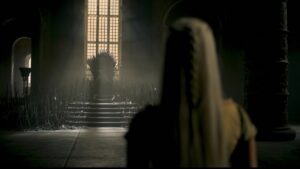
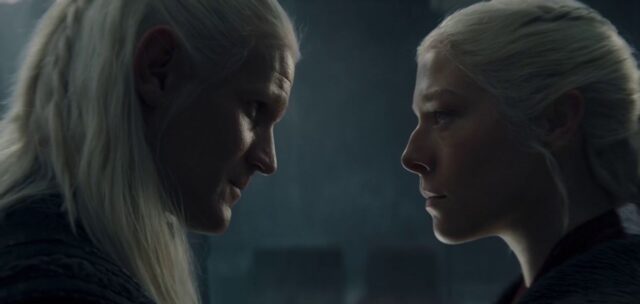
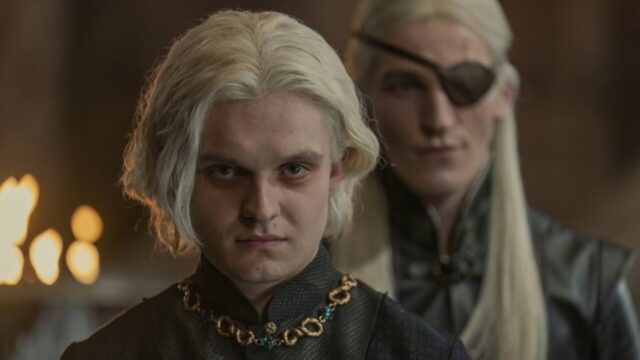
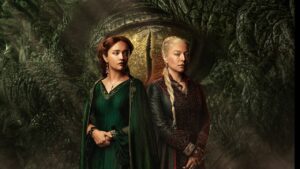
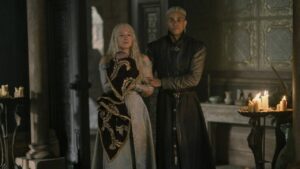
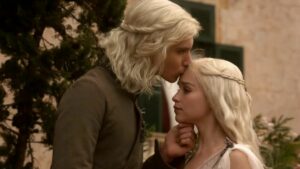
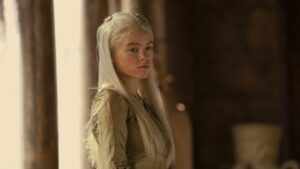
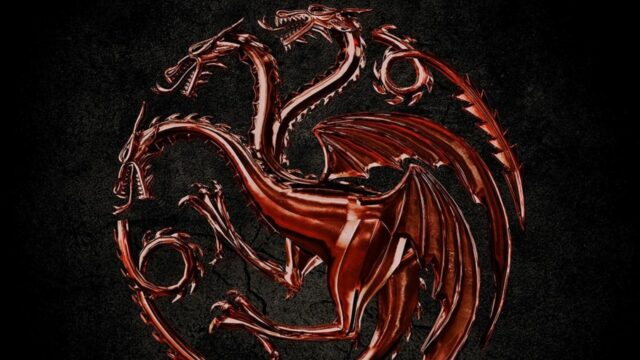
No Comments on How Daemon’s song, sung for Vermithor, is Connected with Aegon’s Prophetic Dream